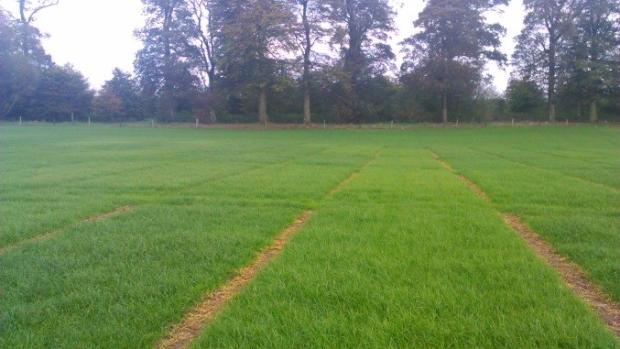Grasses for Grazing - What Cows Want
Date published:
Herbage utilisation is of primary importance to grassland farmers due to its strong association with profit. It is one thing being able to grow lots of grass but it is only that portion of the sward that is ingested by the animal that drives the profitability of the farm enterprise.

Despite this unchallenged fact, perennial ryegrass varieties are only evaluated using mechanically-cut, small plots. This only measures total production and takes no account of animal intake. These trials also differ greatly from what happens on commercial farms where varieties are exposed to different animal grazing pressures. So to identify better grazing varieties, the interaction between grass variety and grazing animal needs to be fully understood.
This article presents the results of two grazing studies that have done exactly this. This project was part of the AFBI-Teagasc-QUB PhD programme focusing on improving grassland production in Ireland.

As such, these varieties were assessed on-farm for total and seasonal production, grass quality and ground cover change, similar to what is recorded in mechanically cut, small plot recommended list trials. However, this time the assessments were made while swards were being grazed by dairy cows. The swards were also assessed for grazed herbage yield, number of grazings and post-grazing sward height, which can’t be measured on the variety plot trials. The results in the table show that some varieties are more suited to grazing systems than others by achieving higher yields of grazed herbage and having more grazing events.
The results demonstrate that having a high ‘Total Yield’ potential did help support higher grazing ‘off-take’ yields by the cows and predictably the lowest yielding variety also gave the lowest grazing yield (see Table). However, some varieties gave a higher ‘Grazing Yield’ than would have been predicted from their total yield figure.
Varieties with low levels of grazed herbage resulted in fewer grazings, with farmers opting to remove surplus grass as silage due to poor animal preference and high post-grazing residual heights that occurred. So, while small plots do provide some indication of potential, the introduction of the animal into the variety trial gave a more complete assessment.

To further understand what was happening on farm, a second animal grazing study was set up to assess 59 varieties and identify what plant characteristics influence grazing efficiency. Typically, varieties with the highest grazing efficiency were those with fewer but larger tillers with long leaves forming a canopy ideally suited to animal grazing behaviour and that maintained high grass quality. These highest performing and ‘easy care’ varieties identified in the on-farm evaluation mainly had these plant characteristics. The results of this study also showed large differences between varieties in their grazing efficiency, with tetraploid varieties performing best and appearing to have the best plant characteristics conducive to intensive grazing.
These two studies have increased our understanding around individual varieties, showing that some are more suited to grazing systems, and could be considered as ‘easy care’ varieties that offer greater flexibility in their management. This work also highlighted that some varieties perform at their best when managed in a specific way (rotation length, pre-grazing covers). All this information is helping grassland advisers and seed merchants ensure that farmers get the best guidance on what varieties to use when reseeding on their farm. It is also helping plant breeders develop a new generation of varieties with improved grazing performances that will benefit farmers in the future.
Notes to editors:
AFBI-Teagasc-QUB Partnership: This is the third in a series of five PhD student articles revealing how this teaching partnership is creating new knowledge and the next generation of grassland experts, to support grass-based farming across Ireland.Over the next weeks we will continue to release the remaining two articles in this series. You can continue to read about some of the key findings from some of these PhD programmes through short overview articles in the press and on the AFBI website (www.afbini.gov.uk).The next article in the series from Stephen McAuliffe reports the benefits of grass-clover swards at the farm system level and finally Thomas Tubritt concludes the series of articles by revealing that cows have preferences for different grass varieties.A mark of success of the PhD programme is evidenced by how these students are now taking their knowledge and skills into agricultural research or into key support roles for the agricultural industry.AFBI is an arms-length body of DAERA delivering research and development, diagnostic and analytical testing, emergency response capability and expert scientific advice for DAERA and other government departments, public bodies and commercial companies in Northern Ireland, and further afield.AFBI’s Vision is “Advancing the Local and Global Agri-Food Sectors Through Scientific Excellence”.AFBI’s core areas:- Leading improvements in the agri-food industry;- Protecting animal, plant and human health;- Enhancing the natural and marine environment.